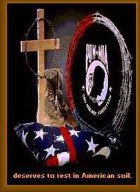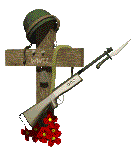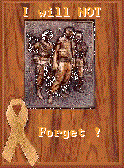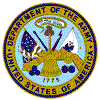
My Icq Number
5463796
Your Visitor #
to Robin Yeakley's page




Rafterman

Robin Yeakley



 |
No Picture Available as of posting date
|
Missing For
Name: Robin Ray Yeakley D.O.B: 24 July 1948 Home of Record: South Bend, IN Date of Loss: 11 June 1972 Country Of Loss: South Vietnam Coordinates Of Loss: 162326N / 1072407E Status:Killed / BNR Aircraft/Vehicle/Ground: OH6A Unit: Unknown at Time of Posting
|
| Name: Robin Ray Yeakley Rank/Branch: E4/US Army Unit: Date of Birth: 24 July 1948 Home City of Record: South Bend IN Date of Loss: 11 June 1972 Country of Loss: South Vietnam Loss Coordinates: 162326N 1072407E (YD565135) Status (in 1973): Killed/Body Not Recovered Category: 3 Aircraft/Vehicle/Ground: OH6A Other Personnel In Incident: Arnold E. Holm; Wayne Bibbs (missing from one OH6A); James E. Hackett; James R. McQuade, Richard D. Wiley (missing from second OH6A). REMARKS: EXPLODE - NO PARABEEPERS - J SYNOPSIS: By December 1971, U.S. troops in-country had declined dramatically - from the 1968 peak of nearly 55,000 to less than 30,000. The enemy, temporarily on the defensive by the moves into Cambodia in 1970 and Laos in 1971, began deploying new NVA forces southward in preparation for another major offensive. In March 1972, the Vietnamese launched a three-pronged invasion of the South. One NVA force swept south across the DMZ, its goal apparently the conquest of the northern provinces and the seizure of Hue. A second NVA force drove from Laos into the Central Highlands, and a third effort involved a drive from Cambodia into provinces northwest of Saigon. Fierce fighting ensued on all three fronts, with NVA success the greatest in the northern provinces. Fighting continued until by June, the North Vietnamese began withdrawing from some of their advance positions, still holding considerable amounts of South Vietnamese territory in the northern provinces. On June 11, 1972, Capt. Arnold Holm, pilot, PFC Wayne Bibbs, gunner, and SP4 Robin Yeakley, passenger, were aboard an OH6A observation helicopter flying from Camp Eagle to the Northern Provinces of South Vietnam on a visual reconnaissance mission. The function of their "Loach" chopper was searching out signs of the enemy around two landing zones (LZ's). The OH6 joined with the AH1G Cobra gunship as "Pink Teams" to screen the deployment of air cavalry troops. On this day, Holm's aircraft was monitoring an ARVN team insertion. During the mission, Holm reported that he saw enemy living quarters, bunkers, and numerous trails. On his second pass over a ridge, at about 25' altitude, the aircraft exploded and burned. It was reported that before the aircraft crashed that smoke and white phosphorous grenades began exploding. After the aircraft impacted with the ground, it exploded again. Other aircraft in the area received heavy anti-aircraft fire. No one was seen to exit the downed helicopter, nor were emergency radio beepers detected. In another OH6A (tail #67-16275), 1Lt. James R. McQuade, pilot, and SP4 James E. Hackett, gunner, tried to enter the area of the crashed OH6A, but encountered heavy fire and their aircraft was also shot down. McQuade's aircraft was hit, and the intensity of the resulting fire caused white phosphorous and smoke grenades carried aboard the aircraft to explode prior to hitting the ground. The aircraft continued to burn after impact and no crewmen left the ship before or after the crash. No ground search was made for survivors or remains of either aircraft because of hostile fire in the area. There are unanswered questions remaining from Vietnam. Of the nearly 2500 Americans who did not return alive or dead, experts venture that hundreds may still be alive. Thousands of reports have been received concerning them. Whether the two OH6A crews are among those seems unlikely. But one can imagine their willingness to deploy on one more combat team to bring those who are alive home to freedom. |






